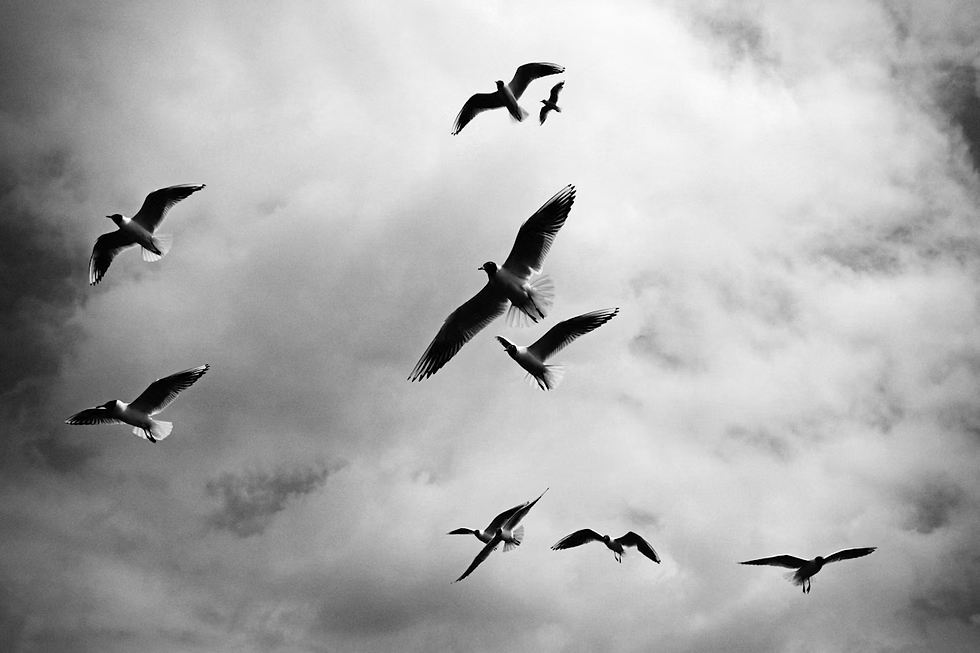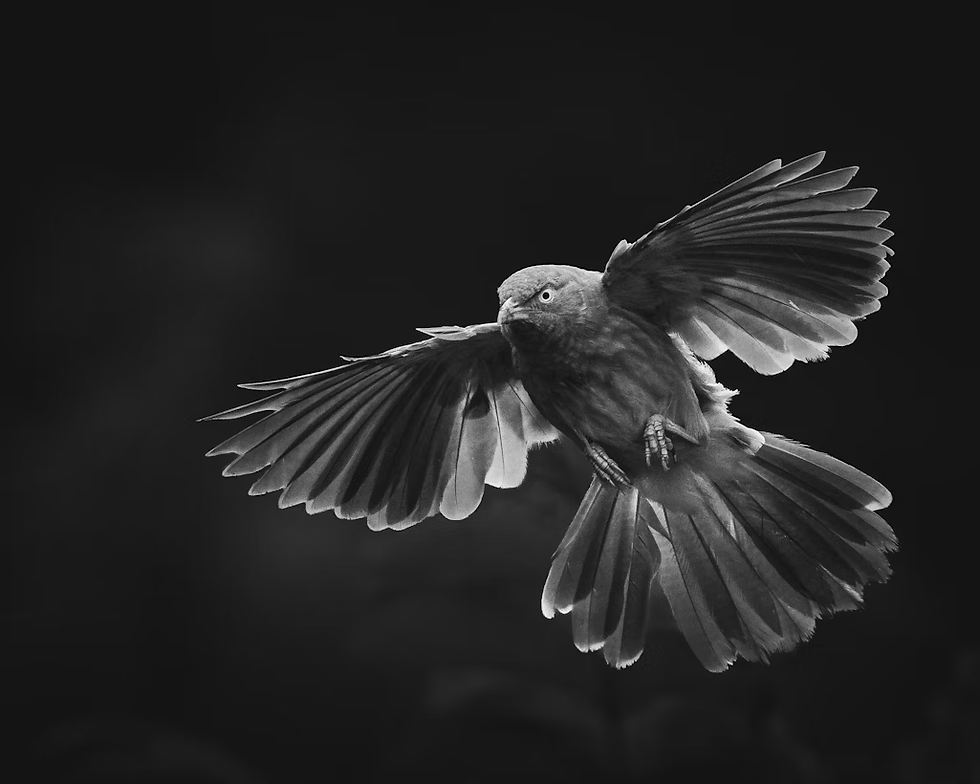Ornithophobia Test: Do You Have a Fear of Birds?
- Emma Calden
- 4 days ago
- 6 min read

Ornithophobia, or the fear of birds, is a specific phobia that can cause significant distress to those who experience it. While many people feel a mild discomfort or startle response when a bird unexpectedly flies near them, individuals with ornithophobia can experience extreme anxiety, panic attacks, or even avoidance behaviors when faced with birds. If you think you may be affected by ornithophobia, taking this self-assessment test could help you understand your fears better.
This article will guide you through a self-assessment test for ornithophobia and provide helpful tips and strategies for managing your fear of birds. Whether you experience occasional anxiety or find that your fear disrupts your daily life, understanding the nature of your fear is the first step toward managing it.
What is Ornithophobia?
Ornithophobia is characterized by an irrational and persistent fear of birds. This phobia is classified as a specific phobia, which means it is a fear that is out of proportion to the actual danger the feared object or situation poses. In the case of ornithophobia, many individuals experience an overwhelming sense of panic, terror, or anxiety even when they are not in close proximity to birds.
This fear can result from a number of factors, including past negative experiences with birds, such as being attacked or startled by them. It can also develop due to cultural portrayals of birds as dangerous or unsettling creatures, or through hearing others express fear of birds. Symptoms of ornithophobia may include rapid heartbeat, dizziness, trembling, shortness of breath, or even panic attacks when confronted with birds. The severity of the phobia can vary; some may feel mildly uncomfortable around birds, while others may go to great lengths to avoid environments where birds are present.
Take the Ornithophobia Test: A Self-Assessment
This test is designed to help you assess whether you may have ornithophobia, which is a specific phobia involving an intense, irrational fear of birds. It is important to note that this test is not a diagnostic tool. It is a self-assessment questionnaire to help you reflect on your feelings, thoughts, and behaviors in relation to birds. If your score indicates moderate or severe fear, it’s a good idea to seek guidance from a mental health professional who can help with diagnosis and treatment.
As you answer each question, consider how you typically feel and react when you encounter a bird or think about birds. Reflect on your responses honestly and try not to overthink them. The test is based on your recent experiences and the impact of your fear on your daily life. Try to choose the response that best describes your usual emotional and physical responses to birds.
Score Interpretation: Understanding Your Fear of Birds
Here’s a breakdown of what your score may indicate and how it can help you understand your relationship with the fear of birds:
0–10 Points: Mild Discomfort or No Fear
If your score falls between 0 and 10, this suggests that you may experience some occasional unease around birds, but overall, your fear is minimal. You may feel a bit uncomfortable when a bird comes close or when you encounter them in specific environments, but this discomfort does not significantly interfere with your day-to-day life. You are likely able to manage these feelings without much effort, and the presence of birds doesn’t cause you to alter your activities or routines. In fact, your fear might be so mild that you don’t even recognize it as a problem.
At this stage, you probably don’t avoid places or situations with birds, and you may even feel curious about them. Your anxiety, if it arises, is manageable, and you can typically remain calm in bird-related situations. This level of fear is usually well-controlled and might not require intervention unless it starts to affect your comfort in more challenging scenarios.
11–20 Points: Moderate Fear
A score between 11 and 20 suggests that your fear of birds is moderate. You may experience more noticeable anxiety in certain situations, such as when birds are nearby in outdoor settings like parks, or when a bird comes into view unexpectedly. While your anxiety is significant, you can still manage it with coping techniques and strategies. However, in some cases, you may avoid certain places or events where birds are present, such as sitting outdoors or walking through areas with large flocks of birds. The fear may cause occasional discomfort, but it does not typically prevent you from leading a normal life.
Your coping skills, like deep breathing or using rational thoughts to calm yourself, may help you navigate situations involving birds without much trouble. However, at this level of fear, it’s common to feel tense or anxious at the thought of encountering birds, especially in unfamiliar or crowded spaces. If this anxiety becomes overwhelming, it could benefit you to explore relaxation techniques or seek advice on how to manage the fear in a healthy way.
21–30 Points: Significant Fear
A score between 21 and 30 indicates a more pronounced fear of birds that may start to interfere with your everyday activities. Your anxiety may cause you to actively avoid certain places or situations where you are likely to encounter birds, such as walking through parks, visiting outdoor markets, or attending events in open areas. The mere thought of being near birds can create heightened stress, and you may find yourself avoiding parks, picnics, or outdoor festivals as a result. You may also start to feel a physical response to your anxiety, such as rapid heartbeat or shallow breathing when birds are nearby.
At this stage, your fear of birds may begin to limit your social interactions and prevent you from fully enjoying certain environments. While you can still manage your day-to-day activities, you may need to take extra precautions to avoid bird-related stress. It might be beneficial to practice relaxation techniques, like deep breathing or mindfulness, to better cope with these situations and reduce your anxiety when birds are present.
31–40 Points: Severe Fear
A score in the range of 31 to 40 reflects a severe fear of birds that can significantly impact your quality of life. Your anxiety may be intense enough to trigger panic attacks, and you are likely to experience extreme avoidance behaviors. You may go to great lengths to prevent any encounter with birds, such as avoiding outdoor activities altogether or making changes to your daily routine to steer clear of environments where birds are common. Even thinking about birds or seeing them in pictures or videos may cause you overwhelming anxiety.
At this level, your fear of birds can cause serious disruptions to your social, professional, and personal life. The intensity of your fear may leave you feeling paralyzed with fear in situations involving birds, and you may find yourself avoiding nature walks, outdoor markets, or other spaces where birds are prevalent. The physical symptoms of anxiety—like shaking, sweating, or dizziness—may become more frequent and harder to control. Seeking professional help, such as therapy or counseling, is highly recommended at this stage to address your phobia and prevent it from continuing to interfere with your life.
Overcoming Ornithophobia: Steps to Take
If you find that your fear of birds is affecting your life, there are several strategies you can use to reduce anxiety and gain control over your fear.
Cognitive Behavioral Therapy (CBT): CBT is one of the most effective treatments for phobias. It helps individuals identify negative thought patterns and replace them with healthier, more realistic thoughts. CBT can also incorporate gradual exposure, where you are slowly exposed to birds in controlled situations, allowing you to become desensitized over time.
Gradual Exposure Therapy: Read our entire guide on overcoming ornithophobia with exposure therapy. This involves gradually exposing yourself to the fear-provoking object—in this case, birds. Start by viewing pictures or videos of birds, and slowly progress to observing them in real life. Eventually, you can work up to being in close proximity to birds, allowing your anxiety to decrease with repeated exposure.
Relaxation Techniques: Learning how to relax your body when anxious can be very effective. Practice deep breathing, mindfulness, or progressive muscle relaxation to help manage the physical symptoms of anxiety.
Professional Support: If your fear of birds is significantly impacting your life, a therapist who specializes in phobias can provide personalized guidance. Therapy options like CBT or exposure therapy can help you work through your fear in a structured and safe environment.
Living with Ornithophobia: Tips for Coexisting with Birds
For those with ornithophobia, the fear of birds can feel overwhelming. However, there are ways to manage the anxiety and learn how to coexist with birds safely:
Stay Calm in Bird-Sensitive Areas: If you are in a situation where birds are present, focus on staying calm and practicing your relaxation techniques. If possible, remove yourself from the area to regain your composure.
Understand Birds' Behavior: Educate yourself about birds and their behavior. Most birds are harmless and will not intentionally harm you unless they feel threatened.
Avoid Negative Triggers: If watching certain bird-related media triggers anxiety, try to avoid it. Replace it with calming activities or soothing sounds to help you relax.
Take Small Steps: Start by observing birds from a distance or in controlled settings, like at a zoo or bird sanctuary. Gradually increase your exposure as you feel comfortable.
Conclusion
Ornithophobia, like other phobias, can be challenging, but it is treatable. By understanding your fear, gradually exposing yourself to birds, and utilizing relaxation techniques, you can begin to reduce your anxiety and regain control over your fear. If necessary, seek professional help to develop personalized strategies that can help you manage your fear and live more comfortably. Whether you're afraid of the bird in your backyard or simply the thought of encountering one, overcoming ornithophobia is possible with the right approach.
.png)










































